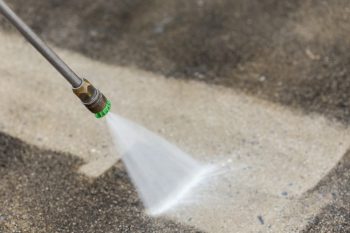
Retrofitting a dishwasher into an existing kitchen setup may seem like a daunting task. However, with the right tools, knowledge, and a bit of patience, you can transform your kitchen space to accommodate this convenient appliance.
To retrofit a dishwasher, first measure the intended installation area and compare it with the dishwasher’s specifications. If necessary, modify the existing cabinet unit to create space. Ensure the space has access to a 120V electrical circuit, water supply, and drain line. Gather necessary tools and materials like a measuring tape, screwdriver, adjustable wrenches, pliers, level, and more. Follow a step-by-step process to connect and install the dishwasher. Always follow safety guidelines like turning off power and water supply, wearing protective gear, and checking for leaks after installation.
Preliminary Considerations
Before embarking on this project, there are several preliminary considerations to take into account:
- Space and measurements: The standard dimensions of a dishwasher are 24 inches wide, 24 inches deep, and 34 inches high. Measure the intended installation area and compare it with the dishwasher’s specifications to ensure a proper fit.
- Cabinetry modifications: If your kitchen has never had a dishwasher before, you may need to remove or modify the existing cabinet unit to create space. This may require professional help to avoid damaging the cabinets or countertop.
- Power supply: Ensure your intended installation space has access to a 120V electrical circuit. A 240V circuit can damage the dishwasher.
- Water supply and drain connections: A dishwasher requires three connections: power, water supply, and drain line. Ensure that the installation space has access to these connections or that you can easily create them.
- Plumbing requirements: Check your local building code for any specific plumbing requirements, such as the use of an air gap to prevent backups. Some plumbing procedures may be best left to a professional plumber.
- Floor condition: Inspect the floor under the intended installation area for any damage or unevenness. Repair any water damage before installing the dishwasher.
- Budget and expectations: Consider your budget, usage expectations, and kitchen layout when choosing a dishwasher model. Consult an appliance expert to help you make an informed decision based on your needs and installation constraints.
Tools and Materials Needed
To retrofit a dishwasher, you will need the following tools and materials:
- Measuring tape
- Screwdriver
- Adjustable wrenches
- Pliers
- Level
- Shallow pan, bucket, sponge, and rag (for collecting water)
- Drop cloth or cardboard (to protect the floor)
- 12 AWG cable
- Duct tape
- Dishwasher tailpiece (optional)
- Hose clamp (optional)
- Dual-outlet shutoff valve
- 3/8-inch flexible copper tubing
- Hole saw (for drilling holes if needed)
- Power drill (if needed)
Step-by-Step Process
Here’s a step-by-step process to retrofit a dishwasher:
- Measure the space: Measure the dimensions of the dishwasher you plan to install and ensure it will fit in the available space.
- Remove or modify the cabinet: Mark the area on the countertop and cabinet where you’ll need to cut to create space for the dishwasher. Use a circular saw and oscillating saw to make the cuts, and clean up the sides with a belt sander to create a smooth, clean line.
- Prepare the plumbing and electrical connections: Shut off the water supply and disconnect the power supply. Install a water supply valve and an electrical outlet if they are not already present in the area.
- Connect the dishwasher: Follow the manufacturer’s instructions to connect the water supply line, drain hose, and electrical connections. Make sure to use Teflon tape on threaded connections to prevent leaks.
- Position the dishwasher: Slide the dishwasher into the newly created space, ensuring it is level and properly aligned with the surrounding cabinets.
- Anchor the dishwasher: Secure the dishwasher to the countertop and adjacent cabinets using brackets and screws provided by the manufacturer.
- Test the dishwasher: Turn on the water supply and power, then run a test cycle to check for any leaks or issues. Tighten connections if necessary.
Safety Guidelines
When retrofitting a dishwasher, it is important to follow safety guidelines to ensure a safe and successful installation. Here are some key safety guidelines to observe:
- Turn off power and water supply: Before starting the installation, turn off the dishwasher’s power supply at the circuit breaker and the water supply using the valve under the sink.
- Separate electrical and water connections: Ensure that your dishwasher’s power cable and water supply line are fully separate and do not come into contact with each other at any stage during the installation.
- Wear protective gear: Use safe handling procedures and wear sturdy gloves to protect your hands during the installation process.
- Follow manufacturer’s instructions: Read the dishwasher manual for specific hookup instructions and follow them closely.
- Ensure proper measurements: Measure the space where the dishwasher will be installed, as well as the dimensions of the dishwasher itself, to ensure a proper fit.
- Check local codes: Local codes may require a dishwasher to be on a separate circuit, possibly shared with a garbage disposal. The size of the wire and the circuit breaker will depend on the load the dishwasher draws. To be safe, use 12-gauge wire run to a duplex plug and protected by a 20-amp circuit breaker.
- Consider professional help for electrical work: If you are not experienced or comfortable working with electrical wiring, consider hiring a professional to handle this part of the installation.
- Test for leaks: After completing the installation, load up your dishwasher and run a trial cycle to check for leaks or any issues.
By following these steps and safety guidelines, you can retrofit a dishwasher into your existing kitchen setup. Remember, if you’re not comfortable with any of the steps, it’s always best to hire a professional to ensure a successful installation.
Frequently Asked Questions
What if my dishwasher doesn’t fit into the space I have?
If your dishwasher doesn’t fit into the intended installation space, you have two options: modify your kitchen cabinetry to create more space or choose a smaller dishwasher that fits. It’s essential to measure the space and check the dishwasher’s dimensions before purchasing.
What if I don’t have a water supply near the intended installation area?
If there isn’t a water supply near the intended installation area, you will need to extend a water line from the nearest source. This might involve drilling through cabinets or flooring, so it’s recommended to get assistance from a professional plumber.
Can I install a dishwasher without an air gap?
An air gap is a safety device designed to prevent backflow of dirty water into your clean water supply. While some areas may not require an air gap, it’s generally recommended for safety. If you choose not to use one, you should install a high loop in the drain hose to prevent backflow.
How long does it take to retrofit a dishwasher?
The time it takes to retrofit a dishwasher can vary depending on several factors, including whether you need to modify cabinets, run new plumbing or electrical lines, and your level of experience with such tasks. On average, you can expect it to take anywhere from 2 to 4 hours.
Can I retrofit a dishwasher myself, or should I hire a professional?
While retrofitting a dishwasher is certainly a project that a handy homeowner can tackle, it does involve electrical and plumbing work, which some people may not be comfortable with. If you’re unsure about any aspect of the installation, it’s best to hire a professional to ensure the job is done correctly and safely.












